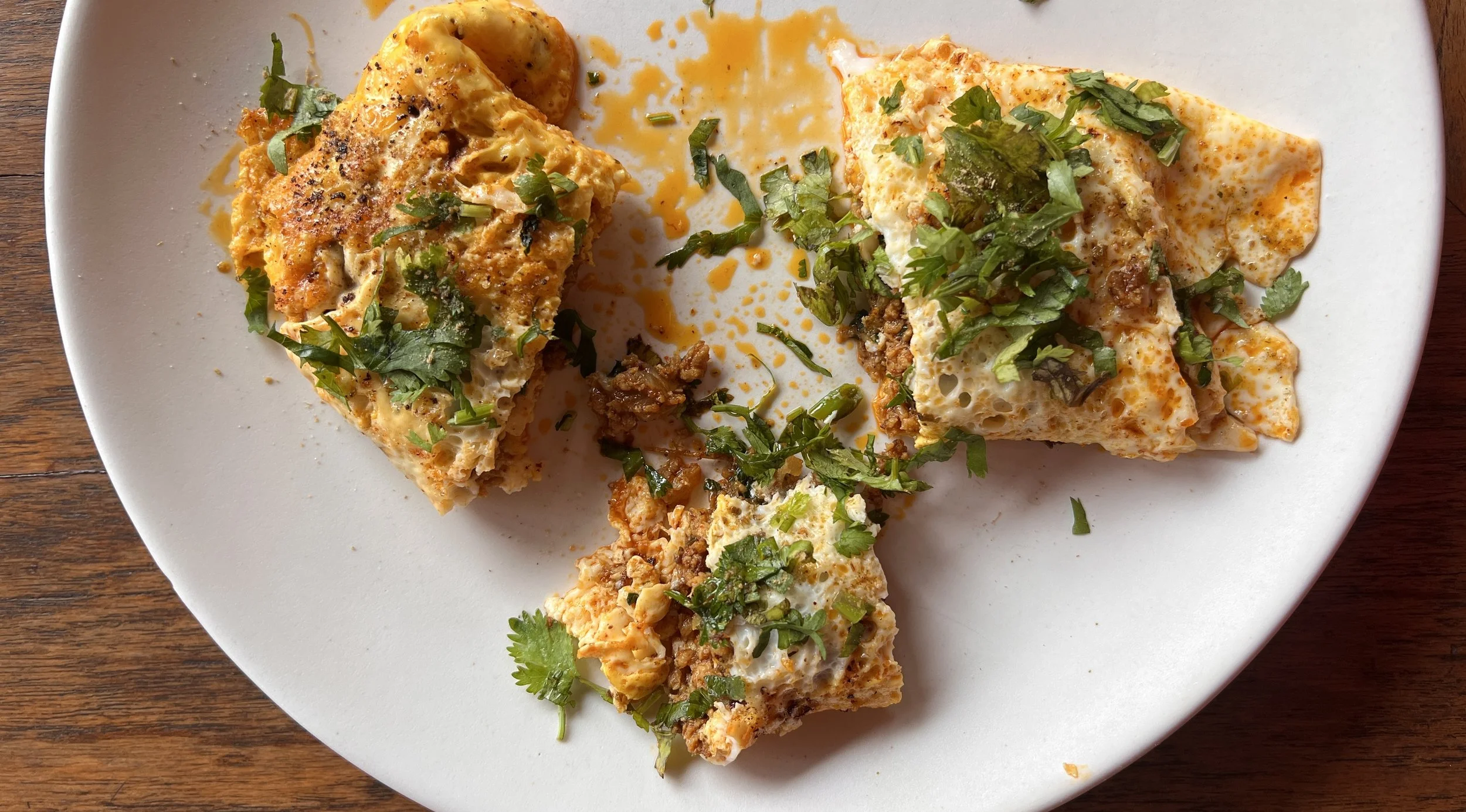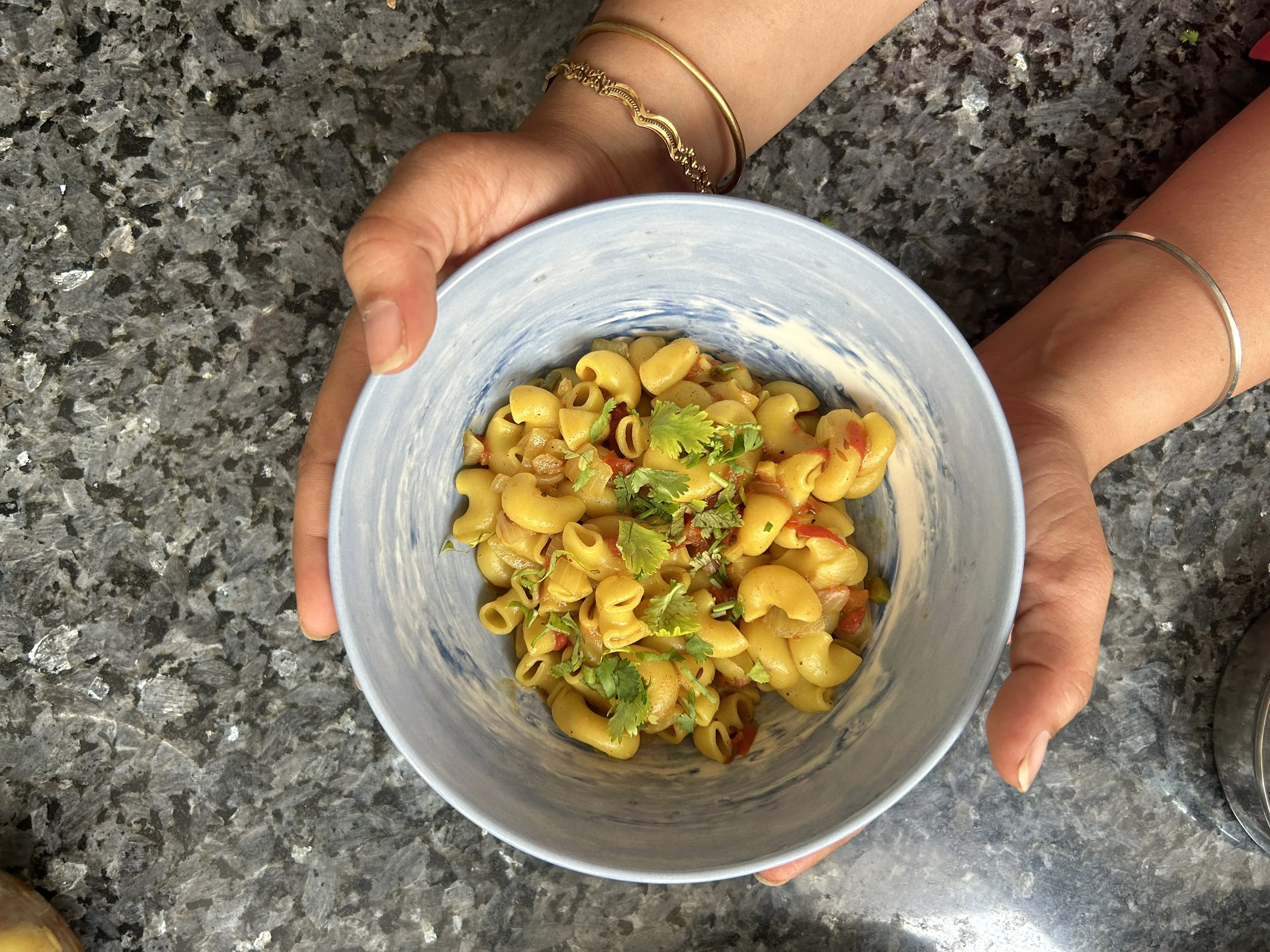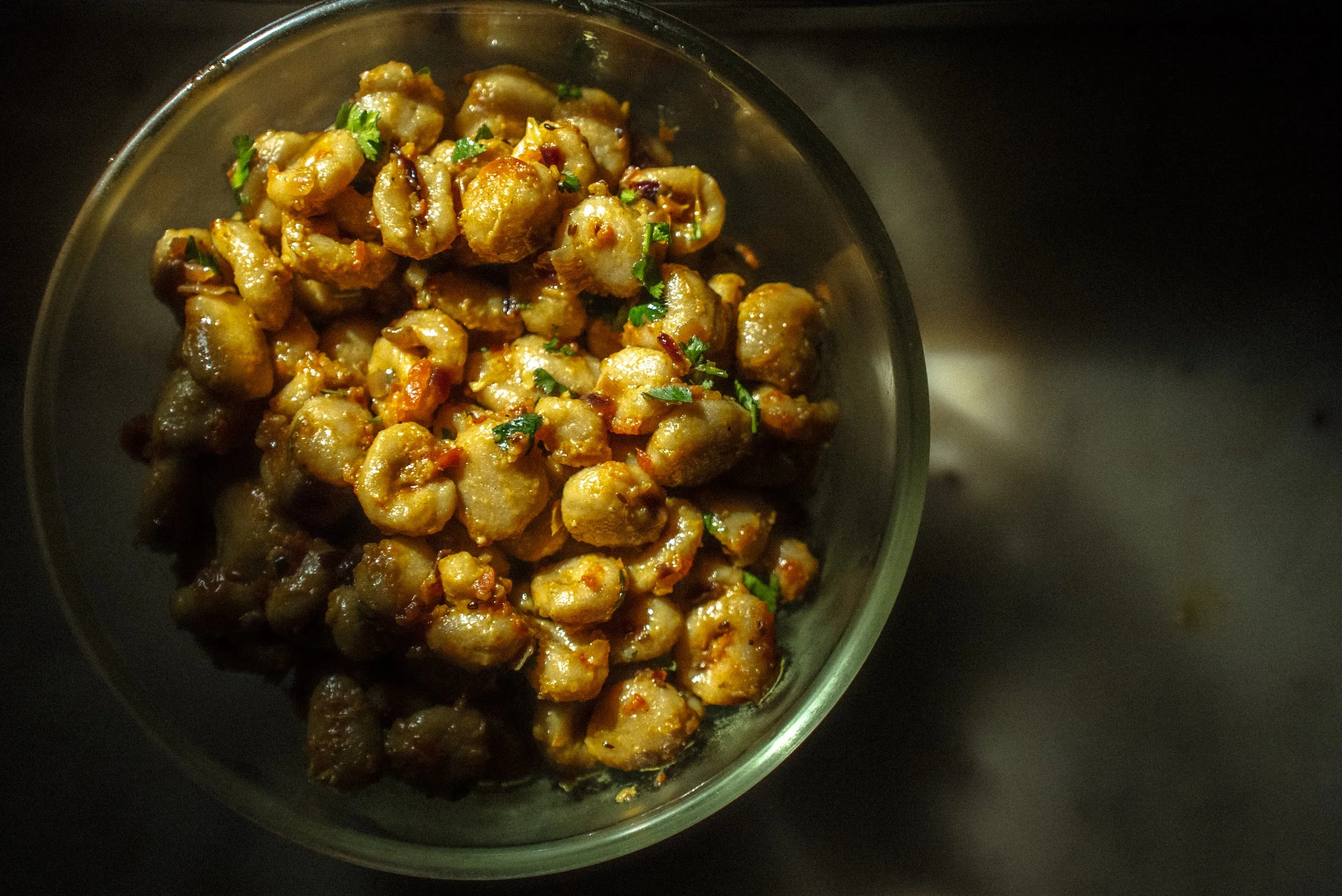How Do I Love Thee, Dear Banana? Let Me Count the Ways

What is Kerala cooking without the banana? Malayalis have a long and delicious association with the fruit: they eat the fruit and the flower. They use the leaves as plates and parchment. They are an agricultural staple and part of the state’s biggest celebrations. Simi Rose George explores the state’s obsession with the prized fruit.
There is nothing my father enjoys more than telling us stories of his boyhood in small-town Kerala. One day, in middle school, he walked up excitedly to the canteen, a rare rupee in his pocket. He ordered the banana roast — a fried plantain, slit and stuffed with shredded coconut, flattened rice, and jaggery. He was brimming with anticipation as it arrived at his table. Exactly then, a classmate swooped in, grabbed his plate, and fled. The pathos of that moment reverberates through time when he recounts this story to my brother and me. He attaches no teachings to this tragic snippet, but I take something away from it — Kerala does interesting things with bananas. As I ventured into adulthood, I came to realize that that was only the beginning.
Kerala is bananas about bananas.
We steam, stuff, fry, and sauté bananas. Us Malayalis love the plump njalipoovan, which fits into the palm of my hand, but also the ethakka, a plantain the size of my forearm. We offer them to gods and elephants alike. We eat the fruit and the flowers. Teardrop shaped, purple-red, and fleshy, the flowers look like the beating heart of the plant — we cook the stem and also consume it as a juice. We use the elephantine leaves as plates and parchment. In short, we use nearly every inch of the plant.
What’s so special about bananas, you might (legitimately) wonder? In Delhi, where I grew up, the only variety we had access to was plain old Robusta, consumed exclusively in much of the world, in the name of banana. In Kerala, we have access to over a dozen varieties, each unique in taste and appearance. Nendran pazham is a plantain with a rich, starchy taste and firm flesh, which holds up well to cooking. Dried, powdered, and cooked into a porridge, it is one of the first foods introduced into a baby’s diet. The njalipoovan is a miniature banana of sorts, enveloped in a thin peel. Sweet with tangy undertones, it is often served to elephants and offered in temples.
A Daily Staple
No fruit is more visible in Kerala’s everyday life than the banana. Large bunches of bananas — yellow and red (the chembapoovan or red poovan) — hang, curtain-like, outside newspaper stands and tea stalls. The unspoken assumption appears to be that whatever your business, you are unlikely to accomplish it without a banana in hand.
Chembapoovan bananas. Photos: ND George
Chembapoovan and njalipoovan bananas.
Even the smallest backyards have a banana plant. My parents have a designated banana room to store bunches (kula) of bananas for ripening. The challenge is to consume or share the kulas as rapidly as they are produced. No visitor leaves without bananas in hand. After Sunday mass, they mingle with friends, dispensing hellos, and bananas.
Bananas have profound agricultural significance in Kerala. They are a staple, providing a steady source of nutrition due to their high yield and year-round production in Kerala’s tropical weather. They are also a reliable source of income for farming communities, making them central to rural economies. Banana plants have significant ecological value. Banana flowers produce nectar generously, promoting pollination by attracting birds and bees, and providing a habitat for many organisms.
Bananas are part of our biggest celebrations. We celebrate Onam, Kerala's harvest festival, with a sadya, an elaborate vegetarian meal which can feature as many as 28 dishes. A njalipoovan is often served as part of the dessert course. Raw plantain features in several sides including kalan, in which it is cooked with yam in a yogurt gravy, and aviyal, a dish of mixed vegetables cooked with coconut and yogurt. Banana chips add crunch. Sadyas are served on banana leaves (vazhayila), perfectly sized to capture the breadth and grandeur of the meal. When you're done, you simply fold the leaf in half along its spine.
The banana blossom (flower)
Onam sadya served on a banana leaf or vazhayila. Stock image
Vazhayila is Kerala’s cooking parchment. We roast fish in banana leaves to make meen pollichathu, and steam rice pancakes stuffed with jaggery and shredded coconut in banana leaves to make ela ada. Train journeys are incomplete without pothichoru — meals of rice and curries wrapped in banana leaves, folded, origami-like, into neat parcels secured with twine.
An afternoon break — naalu-mani kaapi or 4 pm coffee — is obligatory in Kerala. Pazham pori (batter fried nendran banana) is a staple, one of many dishes my mother makes at teatime. Other beloved snacks include banana chips, and the lesser known sharkara varatti, fried banana slices coated in jaggery syrup flavoured with cardamom and a smidge of dried ginger powder.
Bananas with puttu. Credit Shinu Ramachandran
Nendran bananas have a rich starchy taste.
Malayali breakfasts tend to be savoury but we make an exception for bananas. We steam plantains till the skins turn brown and leathery, and the insides turn soft, and serve them in their jackets. Puttu and pazham is a year-round classic. Puttu is made with coarsely ground rice flour and freshly shredded coconut, layered and steamed in cylindrical moulds. Eating puttu and pazham with cutlery would be a travesty. We mash bananas into puttu on our plates with our hands, and break off balls from the resulting mixture — soft, crumbly puttu and sticky banana — to pop into our mouths. This is not a dish you would cook to impress a date. But it is home on a plate for us Malayalis, the sort of meal you can eat messily with family, with no fear of judgement.
Beyond the kitchen
While bananas are a unifying element at Onam, they also play distinct roles in the cuisines of Malayali communities.
Hindus associate bananas with fertility and bounty. Chengalikodan bananas are offered to deities, including at the famous Guruvayoor Temple. At Onam, temples conduct kazchakula samarpanam, as part of which thousands of bunches of bananas are offered by devotees.
Bananas also feature prominently in the cuisine of Kerala Muslims, the Mappilas, believed to be descended from Yemeni traders who arrived in Kerala centuries ago. Mappila cuisine draws from Arab and Portuguese culinary traditions, and leans heavily on Kerala's natural bounties, including coconuts and bananas. Unnakaya, deep fried spindle-shaped parcels of mashed ripe nendran bananas stuffed with sweetened grated coconut, are a popular snack. Kaayi curry, slices of ripe plantain poached in sweetened coconut milk, is part of festive breakfasts.
On Maundy Thursday, which commemorates Jesus’s last supper, Kerala’s Syrian Christians serve INRI appam, an unleavened bread, with sweetened coconut milk. In some communities, a njalipoovan is served alongside.
In the 1930s, a young poet, Changampuzha Krishna Pillai, wrote the poem, Vazhakkula (a hand of bananas), a meditation on the struggles of Kerala's farmers, many of whom lived a life of serfdom. Vazhakkula is the story of Malayappulayan, a poor farmer who plants a banana sapling next to his little hut. He tends to it devotedly. His children play in its shade. Soon, the family comes to see the plant as one of their own. The children can hardly contain their excitement when the plant bears fruit, and a vazhakkula emerges. When the landlord orders Malayappulayan to deliver it to his house, the children burst into tears. Malayappulayan is heartbroken. “Don’t cry, my children”, he says as he leaves with heavy steps, “I will plant another one.” Vazhakkula and other Malayalam literature of its era captured the injustices of Kerala’s feudal agricultural system and reflected the tensions that led to the agrarian revolution, ultimately transforming the state’s socioeconomic order. Kerala still has a way to go, but it is among the least unequal states in India today.
Bananas are a great leveller. They don’t need to be washed or wrapped in fancy packaging, and the plants thrive in even the smallest of backyards. There is a magic to the ubiquity of bananas. Each plant produces only a single hand of bananas. Before it dies, small saplings grow around it. Transplanted elsewhere, these ‘cubs’ grow into full-size plants carrying the essence of the mother plant. In this way, banana plants are immortal, much like Kerala’s cooking traditions.
Simi Rose George is a writer and lawyer based in San Francisco.
ALSO ON GOYA















